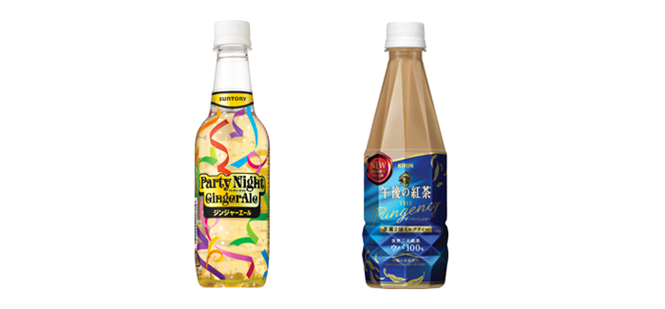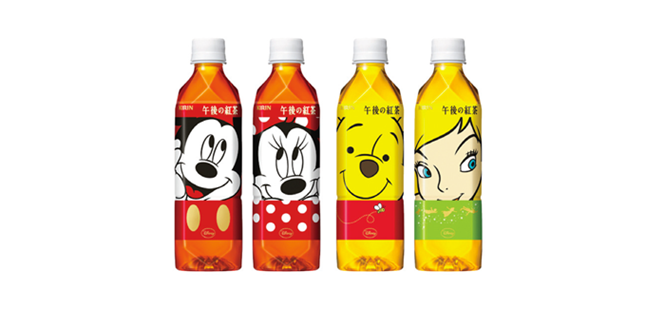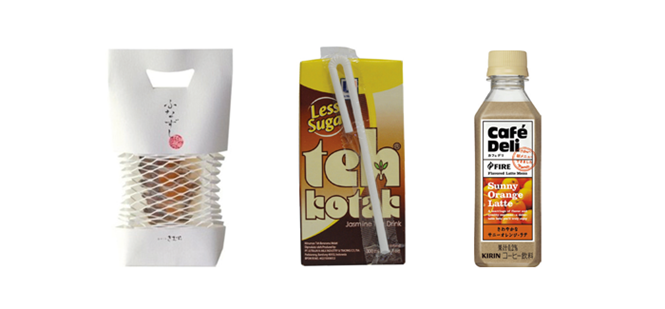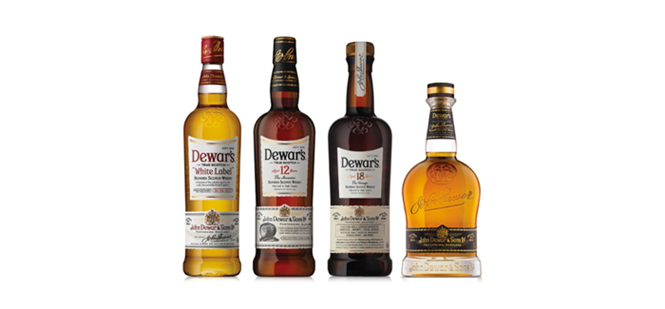The tiger awakens
FMCG markets in Asia are diverse, colourful and engaging as they cater to experienced and new consumers alike. Packaging must thus be versatile and exciting across all sectors and countries. Maureen Byrne examines some of the standout brands and trends across east and southeast Asia
Asia’s diverse markets offer a huge amount of potential for packaging design to influence buying across many different consumer groups – from the sophisticated, highly discerning middle classes in Japan to the rural dwellers of Indonesia, where packaging itself is a relatively new concept to the increasingly affluent households across China that are beginning to seek out luxury packaged goods.
With rising disposable incomes and the continuous pursuit of personal well-being, consumers are trading up to products of better quality, including premium food and beverages. The gift-giving culture in China has also fueled the premiumisation trend, particularly in alcoholic drinks, according to market researcher company Euromonitor with insights into customer preference across Asia. Attractive and high-end packaging materials – such as crystal glass and blue and white porcelain bottles for local spirits – are used to reflect the products’ premium positioning.
Sophie Maxwell, global packaging and brand firm Pearlfisher’s futures director, says, “Right now we’re at a tipping point in the Eastern market, where we are ready for – and eagerly anticipating – the next step in brand expressions and how they create desirability through premiumisation. In the future, the opportunity will exist for a stronger fusion of culture, craftsmanship and expertise, leading to the creation of truly global brands that embrace the greatness of both the east and the west.”
Global giants Pepsi and Coca-Cola continue to fight it out for brand awareness in Asia, and expansion continues apace. Recently, Coca-Cola announced the opening of its 43rd plant in China, in Shijiazhuang, Hebei Province. But its growth is based on the prominence of its iconic branding, and both brands must vie for attention through events, promotions and philanthropic activities, “Coca Cola’s investment in China is strategically important in achieving our 2020 Vision goals, and largely possible due to our partnerships with COFCO and our other bottling partners,” Coca-Cola chairman and CEO Muhtar Kent says. “This new plant will help Coca-Colacreate a lasting positive impact in the community and contribute to a sustainable future for the people of Hebei.”
The three largest global soft drinks brands in Asia continue to be Coca-Cola, Pepsi-Cola and Sprite, but Chinese brand Kangshifu (Tingyi Holding Corp) is not far behind, according to the latest findings from soft drinks researchers Canadean.
The ranking of the top three soft drinks brands has remained unchanged over the past decade. Behind these major international carbonates brands there is movement in the burgeoning Asia market. However, the key difference between newer Asian products and Coca-Cola and PepsiCo is that they are mainly sold in only one country.
Unsurprisingly, China is seeing the biggest year-on-year increase of soft drinks sales, with some local brands marking explosive growth over the last decade. Kangshifu, also known as Master Kong, is now the fourth bestselling brand globally, behind Coca-Cola, Pepsi-Cola and Sprite.
Wahaha, Nongfushanquan and Uni-President are three other Chinese brands that have seen strong growth. Nongfushanquan has registered stunning growth over the past few years, growing 30% per year since 2008 and now ranks 16th in the top 20 global soft drinks line up.
The Share a Coke concept has been a success in Asian markets, but was a standout success, according to Coca-Cola (Thailand) October 2013 sales soared 24% year-on-year, and maintained their impetus through November as a result. Can customisation booths proved hugely popular, with nearly 170,000 cans customised in one month, says the company. Kostas Delialis, Marketing Director of Coca-Cola (Thailand) Ltd. says, “Our purpose is to inspire youth and young adults to openly express their feelings and share a moment of happiness with others through the ‘Share a Coke’ special edition cans and PET bottles that are printed with names and positive messages. The campaign got everyone so excited that over 6,900 photos were shared by consumers on social media with the hashtag of #ShareaCokeTH.” The concept has picked up extensive media coverage, both in its own right and for a competition for tickets to the FIFA World Cup in Brazil.
Japan is a virtual treasure trove of interesting and innovative packaging – from the truly creative to the just plain weird – reflecting the huge number of products that are launched each year. In western markets, products are launched with the hope that they will become established and last many years. In Japan the turnover tends to be rather shorter, with many products disappearing from the shelves after only a short period, acccording to researchers Mintel.
One of the most dominant companies in Japanese food and drink is Kirin. At the end of last year, it announced the launch of a premium afternoon tea drink called The Pungency, featuring a high grade of tea, double brewing and premium packaging in a PET bottle with a striking shape.
Inventiveness is a key trait in Japan, and the packaging of a product called Funazushi, a traditional fish snack from the Shiga prefecture of Japan, couldn’t be more graphic. The pattern looks like a fishing net and scales that concertina upwards, and the top resembles a fin. The concept was created by contemporary designers Masahiro Minami.
The targeting of children through packaging is not a strategy confined to the western world. In Japan, Kirin announced the introduction of a range of ready-to-drink teas for young consumers featuring licensed Disney characters. The colourful packaging designs are intended primarily for sale through Japan’s ubiquitous vending machines.
As for colas, Japanese company Kirin used an interesting ploy to compete with the big boys: Mets Cola, launched last year, won government approval as a ‘tokuho’ drink – earning it special recognition from the Japanese Consumer Affairs Agency for its specific health benefits, the company has announced. It contains a nutrient called indigestible dextrin, which restricts the absorption of fat from food intake.
For packaged food and non-food categories, plastic pouches continue to present a cost- efficient alternative compared to traditional packaging in Indonesia according to Euromonitor. Plastic pouches are lighter and more cost efficient, targeting the mass consumer base in middle- to low-income segments. As a refill pack, plastic pouches are also increasingly popular in soy based sauces, liquid floor cleaners, fabric softeners and vegetable and seed oil, says Euromonitor.
Sembako or Sembilan Bahan Pokok (Nine Basic Foods), defined by the Indonesian Ministry of Trade, are increasingly sold as packaged food instead of sold loose. This has been more visible for vegetable oil, rice and sugar. These loose products are mostly sold in traditional stores such as outdoor markets and ‘warungs’ and packed in transparent flexible plastic without any labelling. This practice continues to be strong in rural areas, while city-dwellers now do their shopping at modern grocery retailers which have products packed in fixed sizes and with correct labelling, including a BPOM (the agency responsible for food safety) registration number to ensure their safety.
Like China and India, however, the increasing affluence of consumers in Indonesia is fuelling demand for more sophisticated products, such as a Jasmine Tea Drink with reduced sugar sold in individual 300ml cartons with a straw attached. The ready-to-drink product comes in FSC-certified packaging featuring the Facebook and Twitter logos – quite advanced for the Indonesian market.
The growth in modern retail is polarising the Indian market. The consumers at such retail channels demand premium westernised products, which has implications on packaging. For instance, bar soap is mostly available in flexible packaging. However, at modern retail outlets, it is mostly available in folding cartons. This is because premium bar soap brands prefer folding cartons for packaging, over flexible, according to research by Euromonitor.
Despite the recession that has plagued Europe and the U.S. over the past few years, the Indian economy has continued to grow due to younger demographics and high domestic demand. This was reflected in a high growth level in the FMCG sector due to demand for products like packaged foods, alcoholic drinks, soft drinks, beauty products and home care. Resultingly, packaging unit volume witnessed 5% growth in India in 2012. If not for the stagnating tobacco market, the growth would have been 10%.
According to Canadean, the demand for small packaged juices and nectars is growing, but freshly prepared products are still dominating the sector in India. The packaging focus for carbonates has shifted from refillable glass bottles to non-refillable PET bottles. This has been the case for both single-serve bottles but particularly for large family packs. In 2012, 250cl and 25cl PET bottles were introduced to the market. PepsiCo also trialled a 300cl pack.
At the top end of the market, popular western brands such as Dewar’s whisky are making their way to the Indian market. For its global relaunch, Dewar’s blended Scotch whisky has been given a new visual identity and bottle design. The new packaging designed by Stanger & Stanger is being supported by a global multimedia campaign.
The new look and feel begins with a distinctive shape for each bottle in the range. Excellence is expressed in every aspect – from the bold colours, stoppers and seals, to presentation boxes, labelling, bespoke typefaces and product information – all inspired and sourced from the extensive brand archive in Scotland, reports John Burke, global category director for Dewar’s.
“We are immensely proud of Dewar’s, and the quality and skill that it has embodied for the past 168 years. True Scotch, coupled with the new design, is our way to connect with the past, while embarking on an exhilarating journey into the future,” says Burke. “Our new marketing campaign tells the story of the brand and the exquisite liquid in a real and tangible way, giving every consumer the opportunity to connect with Dewar’s history.”
Johnnie Walker is another western alcohol brand that has made inroads into Asia. It has targeted the luxury market with its so-called super-whiskey – a $600 whiskey sold in a high-quality crystal bottle. Its Beijing and Shanghai-based Johnnie Walker Houses serve as a way to access the Chinese elite classes.Rudy Paoli, MD of Diageo Global Reserve told LuxurySociety that brand experience is at the core of the Asian luxury food and drink market, “Within luxury there is a strong movement towards authenticity – brands that have heritage, craftsmanship and quality at the heart. The luxury consumer continues to look for something remarkable and truly special. Stories of collaboration, provenance, quality and exclusivity create products of true luxury status, rather than the price tag.
Opportunities in the Asian market for branded, packaged goods are huge – at both the lower end of the market, and the burgeoning luxury end, whether the products are locally produced or supplied by global players.
















